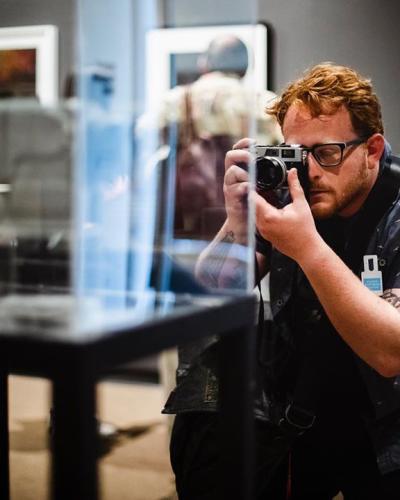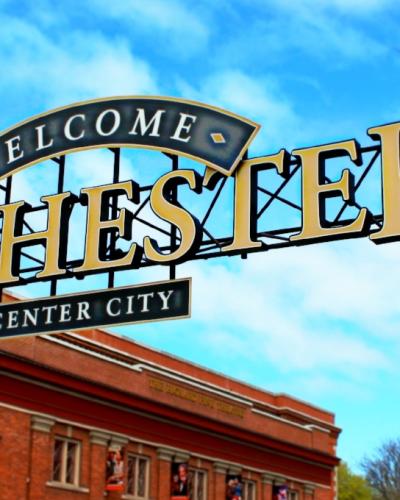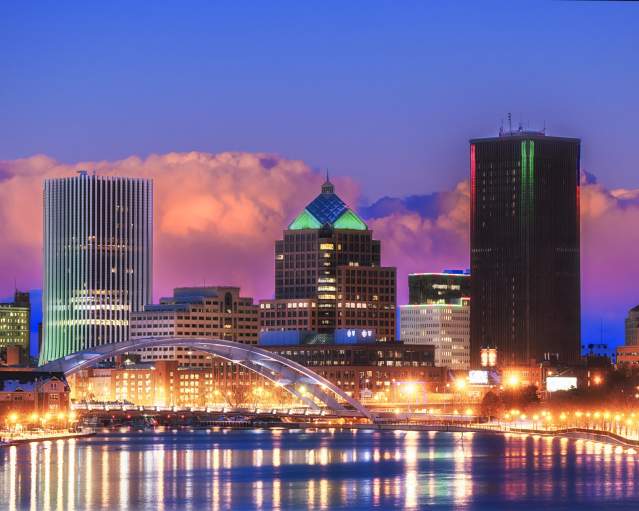Civil Rights
Trip Ideas & Itinerary
Rochester played an important role in the abolition movement, serving as a final stop on the Underground Railroad for slaves seeking freedom before heading to Canada. In addition, Rochester's African-American residents' historical contributions to the culture of the United States. These residents have helped build the city and the nation since its incorporation in 1834. A large part of the legacy is tied to abolitionist, author, and ambassador Frederick Douglass who lived here for 25 years.
Douglass called Rochester home from 1847 to 1872, and lived here longer than anywhere else in his life. In Rochester he published his newspapers, the North Star and Frederick Douglass’ Paper, assisted friends Amy and Isaac Post in Underground Railroad activities, hosted runaway slaves in his own home, gave speeches, supported women’s suffrage alongside suffragist Susan B. Anthony and much more before moving to Washington D.C. in 1872.
-
To begin your journey through Rochester’s African American history, take an Underground Railroad tour downtown with AKWAABA Tours, or follow the Heritage Trail that winds its way through downtown Rochester.
-
A number of historical markers designate significant events in Douglass’ life during his stay in Rochester, including his Highland Farm off South Avenue and former home on Alexander Street.
-
Visit the Frederick Douglass Monument in Highland Park, an eight-foot likeness of the great advocate for freedom and women’s rights. This statue was the first in the country built in honor of an African-American person. Not far from the Douglass statue in Highland Park is Mount Hope Cemetery, where Douglass was laid to rest. Mount Hope is also the final resting place of Susan B. Anthony.
-
The Douglass statue also inspired one of Rochester’s most prominent public art projects in the past several years. In 2018, thirteen replica statues of the Frederick Douglass Monument were built and installed in locations around Rochester that were significant to Douglass’s life. Each statue installation includes a QR code that when scanned brings viewers to a website with more information on the significance of the site and the Douglass legacy. The website also includes a map leading viewers to the other Douglass statues.
-
Be sure to visit Susan B. Anthony square to view the “Let’s Have Tea” sculpture, which depicts Douglass and Anthony sitting down for tea. The famous abolitionist and suffragist were close friends who shared the common goals of social justice and civil rights. Now they share a proud place in Rochester's history.
-
Visit the Memorial African Methodist Episcopal (AME) Zion Church, where pieces of Douglass’ life and work are celebrated. The Rev. Thomas James, an escaped slave, was the founding pastor of the Memorial African Methodist Episcopal Zion Church. The original church building’s basement was home to Douglass’ North Star newspaper. The congregation holds an unparalleled place in Rochester’s African- American history and those of the nation. The original building provided shelter for hundreds of escaped slaves led to freedom by Harriet Tubman, and was a site for Susan B. Anthony’s last public address. The 190- year-old congregation now worships at 549 Clarissa St.
-
Explore Rochester’s connections to the Underground Railroad with a visit to the Rochester Museum & Science Center’s permanent exhibit, “Flight to Freedom: Rochester’s Underground Railroad.” Thousands of freedom seekers used the trail to northern states and to Canada. For hundreds of those the Rochester area was a hub and a gateway.
-
Visitors today can still get a feel for what the freedom seekers might have seen at Kelsey’s Landing, often the gateway to freedom in Canada. Constructed in 1844 in the Genesee River Gorge just north of the Lower Falls near downtown, the landing served as Rochester’s dominant port during the time that escaped slaves were seeking freedom on the Underground Railroad.
-
Beyond the Underground Railroad, visitors will find the city’s African American vibrant legacy in arts and culture at annual festivals, and a tremendous growth in theater productions, including the Sankofa Theatre Festival, Bronze Collective Theatre Fest and performances at local theaters like the MuCCC Theater and the Avenue BlackBox Theatre.
-
Rochesterians continue to hold influence throughout the nation and world. Garth Fagan, head of the renowned Garth Fagan Dance company, and the Tony award-winner who choreographed Broadway’s Lion King, is headquartered in the city.





